#arthur prince of wales
Photo


THE WHITE PRINCESS (2017)
#twpedit#thewhiteprincessedit#perioddramaedit#periodedit#henryviiiedit#henryviiedit#the white princess#henry vii#henry viii#Arthur Prince of Wales#jacobcollinslevyedit#jacob collins levy#*mine
205 notes
·
View notes
Text
Tudor Week 2023

To celebrate our belated three-year anniversary we are hosting Tudor Week 2023. This is going to be hosted from Monday the 31st of July to Sunday the 6th of August.
The week will go as follows:
Day 1 - Monday, 31st of July : Favourite Tudor Rivalry
Day 2 - Tuesday, 1st of August : Favourite Female Tudor Family Member
Day 3 - Wednesday, 2nd of August : Best Tudor Myth
Day 4 - Thursday, 3rd of August : Favourite Male Tudor Family Member
Day 5 - Friday, 4th of August : Most Used Tudor Related Resource
Day 6 - Saturday, 5th of August : Favourite portrayal of a Tudor Family Member
Day 7 - Sunday, 6th of August : Favourite Tudor Mentor and Mentee relationship (can be a Tudor familial relationship, or a Tudor and a courtier relationship)
This can cover all events and media that a Tudor family member is present, so from Owen Tudor to Elizabeth Tudor, and may include spouses and acknowledged children of direct members of the Tudor family (if unsure who we cover please check our Family page). We have attempted to make it as broad as possible and no pressure if you are late with some of the days, we will still reblog.
Previous Years: 2021, 2022
Be sure to tag your posts TudorWeek2023 and DailyTudors, looking forward to seeing your posts!
- The Team at DailyTudors
#tudorweek2023#henry vii#henry viii#edward vi#mary i#elizabeth i#owen tudor#catherine de'valois#edmund tudor#margaret beaufort#jasper tudor#catherine woodville#elizabeth of york#arthur prince of wales#katherine of aragon#margaret queen of scotland#james iv of scotland#archibald douglas#henry stuart#anne boleyn#jane seymour#anne of cleves#kathryn howard#catherine parr#mary queen of france#louis xii#charles brandon#henry fitzroy#announcement
138 notes
·
View notes
Text
#owen tudor#jasper tudor#henry vii#arthur prince of wales#margaret tudor#henry viii#mary tudor#mary i#elizabeth i#edward vi#poll
43 notes
·
View notes
Text



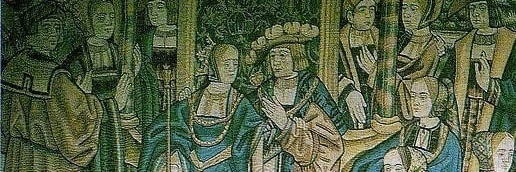



I’m never gonna meet what could’ve been, would’ve been, what should’ve been you…
Tudor Week Day 4: Favorite Male Tudor Family Member: Arthur Tudor, Prince of Wales
#tudorweek2023#dailytudors#tudor week 2023#daily Tudors#catherine of aragon#prince arthur#arthur tudor#arthur prince of wales#tudor history#the tudors#english history#tudor era#tudor england#taylor swift#bigger than the whole sky#tudor dynasty#tudor period#tudor portraits#tudors#sixteenth century#16th century#renaissance history#henry vii#henry vii of england#elizabeth of york#katherine of aragon#catalina de aragón#catalina de aragon#henry viii
26 notes
·
View notes
Text

#tudor family#tudor dynasty#arthur prince of wales#arthur tudor#henry viii#edward vi#tudor confessions
66 notes
·
View notes
Text




The Mortimer inheritance running in a Tudor prince: here’s how historian Sean Cunningham brings to public debate an often overlooked aspect of Prince Arthur’s Yorkist connection to his Mortimer’s ancestors and how he, an unofficial Earl of March, was expected to incorporate this to his kingship.
“Arthur's transition into the leader of Marcher society did involve a clever reinterpretation of regional history that put the new prince at the center of an old story.
The area that became the most important to Prince Arthur was the region in the Welsh Marches linking Worcester, Bewdley, Ludlow, Weobley and Leominster. Along with Shrewsbury to the north, Wigmore to the west and Hereford to the south, this was the centre of power for the Prince of Wales, and the area that his Council in the Marches dominated as representative of the more distant Westminster government.
In setting up Arthur's seat of power here, Henry VII was consciously merging several strands of political influence.
Those people that surrounded and served Arthur in the late 1490 knew that this region had been the heart of the lordship of the earldom of March. The last living earl had been the young Edward V before his father died and he disappeared.
Once Edward was believed to be dead, Arthur's mother, Queen Elizabeth, became the last heir of the Yorkist kings and therefore the most prominent living descendant of the Mortimers as earls of March.
Arthur was being linked to that earldom and the Mortimer family as a direct expression of his mother's lineage and what it represented. The earldom had for many years been a critical part of the House of York's power.
Mortimer blood was also a factor in building a Yorkist claim to the throne. Elizabeth's grandfather Richard, 3rd Duke of York had been a product of the marriage of Anne Mortimer and Richard, Earl of Cambridge, one of Edward III's grandsons. Anne was the sister of the last Mortimer Earl of March - Edmund Mortimer, who had died in 1425.
Richard, Duke of York had inherited the Mortimer estates and the dormant Mortimer claim to the crown through dual descent from Edward III. It was Edward IV that brought this fusion of rights and entitlements together when he became king in March 1461.
For Prince Arthur to be seriously considered the fulfillment of the prophecy of King Arthur's deed to lead Britons in a new and glorious age, the kings subject were expected to know the significance of the story. They were probably helped out in their recollections by the representation of parts of King Arthur's story in the pageantry that accomparied many ceremonial events in which the royal family was involved.
When Prince Arthur visited Coventry in 1497 he was greeted by a pageant that featured King Arthur and the other eight of the Nine Worthies, in which the legendary King of Britain made a speech of welcome. This entertainment carried an important and repeated message about the legitimacy of the place of Henry VIl's family in the long line of England's rulers.
It is possible, however, that there was a more specific justification for Henry VI's use of the legends of early Britain, namely Prince Arthur's inheritance of Mortimer power and his presence in the borderlands of England and Wales.
The Mortimer family had shown considerable interest in the Arthurian stories as part of their genealogy. The legendary figures Cadwaladr, Brutus and Arthur were viewed as ancestors and not mythological predecessors. When the Mortimers married into the family line of Llewelyn ap Iorwerth in 1228 they absorbed the descent of the princes of Wales growing from Cadwaladr.
A genealogical roll of the Mortimer family provides some valuable evidence of how Arthurian tradition was heavily promoted by family members as they developed their relationship with King Edward I in the 1270 and during the English war with Prince Llewelyn ap Gruffydd before 1282.
Later Plantagenet kings allowed the Mortimers to build up vice-regal power along the border from their castles and estates at Wigmore, Ludlow, Cleobury and Chirk. Even after the treason and execution of Roger Mortimer, 1st Earl of March in 1330, the family were able to recover their influence in the Marcher lands.
(…) Even after Edward I’s conquest of Wales and Henry IV's defeat of Owar Glyadir a century later, the annexation of Wales by England was never seriously contemplated. The English Crown's authority was exercised by deputies from within the regional communities that knew the people, landscape and history of the March. They were the king's intermediaries and were agents whose relationship with the Westminster government and court was essential to the achievement of aspirations of national security and stable rule.
Henry VII's interest in ancient British stories was a prop to the extension of his royal authority generally, and that of the Marcher lords in particular. It fitted with his grand scheme to revive an older form of lordship for his son in order to create a foundation of loyalty for Arthur's future kingship. King Henry's prominent use of the red dragon standard associated with Cadwaladr - still one of the most identifiable of Tudor images -(…).
In November 1493, Arthur was formally granted the lands and rights of the earldom of March during the king's pleasure. He was not expressly given the title, which had already been in Crown hands for thirty-two years, but this was an absorption of Marcher power into the new regional force that Arthur was to embody.
Once he held the power and estates of the earldom of March, Arthur acquired the real and the mythical associations of the earldom into his personal lordship. His arrival as a new border figurehead offered Arthur the potential to build a very strong and stable structure of lordship in the communities of the Marcher region.
Since it distilled his personal power into a more potent form, immediate acceptance of Arthur's inheritance of the March was as important as a boost to Arthur's royal presence as was his national status as Prince of Wales after 1489 or earlier title of Duke of Cornwall.
As he grew into his role, Arthur would develop this network and nurture the service of families connected with the earldom of March and the Yorkist Prince of Wales without the need to labour his relationship to the legendary power of King Arthur.
At the end of 1485, the threat posed by opponents biding their time in Richard IIl's northern power base was the most immediately pressing problem for Henry VII. Unfortunately, he could not simultaneously relax his efforts to promote his kingship and make the presence of the regime felt elsewhere.
In the areas where encouragement was offered by the loyalties of those who had already declared their allegiance to the new regime, the king moved swiftly to establish his allies. Henry VII could not afford to be seen to be undermining, manipulating or threatening the old Yorkist and Mortimer networks.”
Cunningham, S. “Prince Arthur: The Tudor King Who Never Was.”
#Arthur Tudor#Prince of Wales#Arthur prince of Wales#Arthur Tudor Prince of Wales#Tudor dynasty#Tudor England#cousin’s wars#wars of the roses#house of York#house of Mortimer#house of Lancaster#Henry VII#Richard of York#Richard 3rd Duke of York#Richard of Conisbury#Anne de Mortimer#Roger de Mortimer#Roger Mortimer#Earl of March
30 notes
·
View notes
Text
Happy birthday to George R.R. Martin, May from pokémon, Arthur Prince of Wales, Malcolm Reynolds from FireFly and also ME!!





#it's my birthday!!#that pic is so old at this point#im making this post while very drunk on new years eve#i hope i still use tumblr by the time this is posted#pokémon#game of thrones#firefly#arthur prince of wales
7 notes
·
View notes
Text
Part 1: Arthur & Catherine
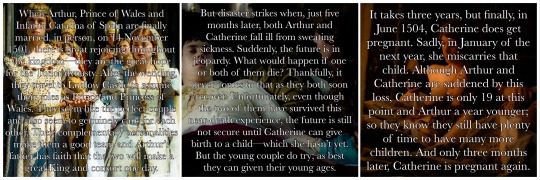

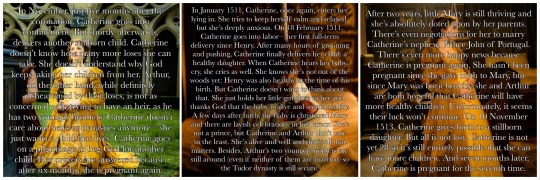


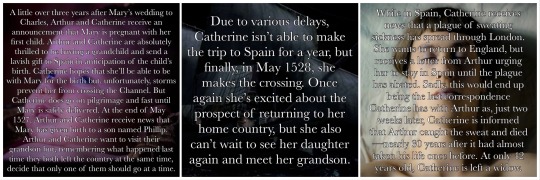

AU: Catherine of Aragon, Anne Boleyn, and Jane Seymour are the respective wives of Arthur, Henry, and Edmund Tudor. [Part 2 // 3]
(requested by @alternatexworlds)
(Read on AO3)
#au#tudor au#arthur tudor#arthur prince of wales#catherine of aragon#katherine of aragon#henry viii#mary i#arthur x catherine#request
33 notes
·
View notes
Photo

A spokesperson from Buckingham Palace has said King Charles is "so proud of Catherine for her courage in speaking as she did".
The King has "remained in the closest contact with his beloved daughter-in-law throughout the past weeks." ❤️
-- Belle
#catherine elizabeth#princess catherine#princess of wales#princess catherine of wales#catherine the princess of wales#william arthur philip louis#prince william#prince of wales#prince william of wales#william the prince of wales#prince and princess of wales#william and catherine#kensington palace#king charles iii#his majesty king charles iii#queen camilla#queen#british royal family
178 notes
·
View notes
Text
when Alex texted Henry, "yo there's a Bond marathon on and did you know your dad was a total babe?"



















MORE RWRB in this post(many links!!):









+ this post:
xx
#rwrb#arthur fox#henry fox#jude law#young jude law#judelawedit#red white and royal blue#red white and royal blue movie#casey mcquiston#matthew lopez#rwrb movie#firstprince#alex x henry#henry x alex#prince henry of wales#prince henry fox mountchristen windsor#prince henry george edward james hanover stuart fox#prince henry rwrb#agcd#acd#tzp#taylor zakhar perez#nick galitzine#nicholas galitzine#bea fox mountchristen windsor#ellie bamber#james bond#henry fox x arthur fox#Spotify
138 notes
·
View notes
Text

Rereading Red white & royal blue and this is the most merthur thing I have come across so far ❤️🤍💙
#merlin#the once and future fandom#arthur pendragon#merthur#bbc merlin#merlin bbc#merlin x arthur#red white and royal blue#henry fox mountchristen windsor#prince henry of wales#alex claremont diaz#alex x henry#paralells#reread
227 notes
·
View notes
Text
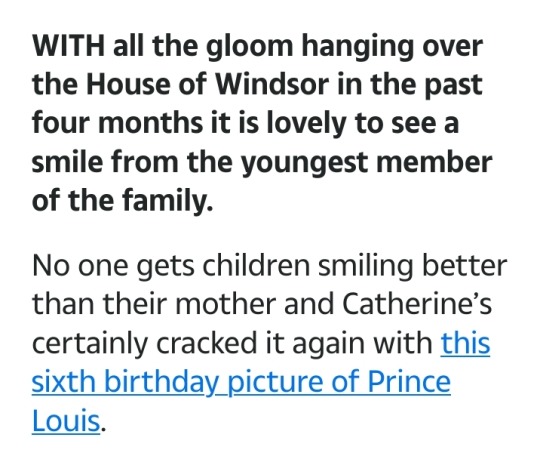






#Prince Louis of Wales#Prince Louis#Princess of Wales#Catherine Princess of Wales#Catherine Middleton#Kate Middleton#British Royal Family#Arthur Edwards#birthday
21 notes
·
View notes
Text
Who is interested in a Tudor Week 2023?
#henry vii#henry viii#edward vi#mary i#elizabeth I#owen tudor#catherine de'valois#edmund tudor#margaret beaufort#jasper tudor#catherine Woodville#elizabeth of york#arthur prince of wales#katherine of aragon#margaret queen of scotland#james iv of scotland#archibald douglas#henry Stuart#anne boleyn#jane seymour#anne of cleves#kathryn howard#catherine parr#mary queen of france#louis xiii#charles brandon#henry fitzroy
70 notes
·
View notes
Text
28 notes
·
View notes
Text

Flemish tapestry showing Catherine of Aragon and Arthur Tudor’s court (early 1500s)
#catherine of aragon#katherine of aragon#catalina de aragon#prince arthur#arthur tudor#Arthur prince of wales#art#tapestry#flemish art#renaissance#renaissance art#northern renaissance art#northern renaissance#tudor era#tudor dynasty#the tudors#tudor#tudor period#tudor england#prince of wales#Wales#tudor history#english history#spanish history#art history#six wives of henry viii#tapestry art#16th century#16th century art#sixteenth century
138 notes
·
View notes
